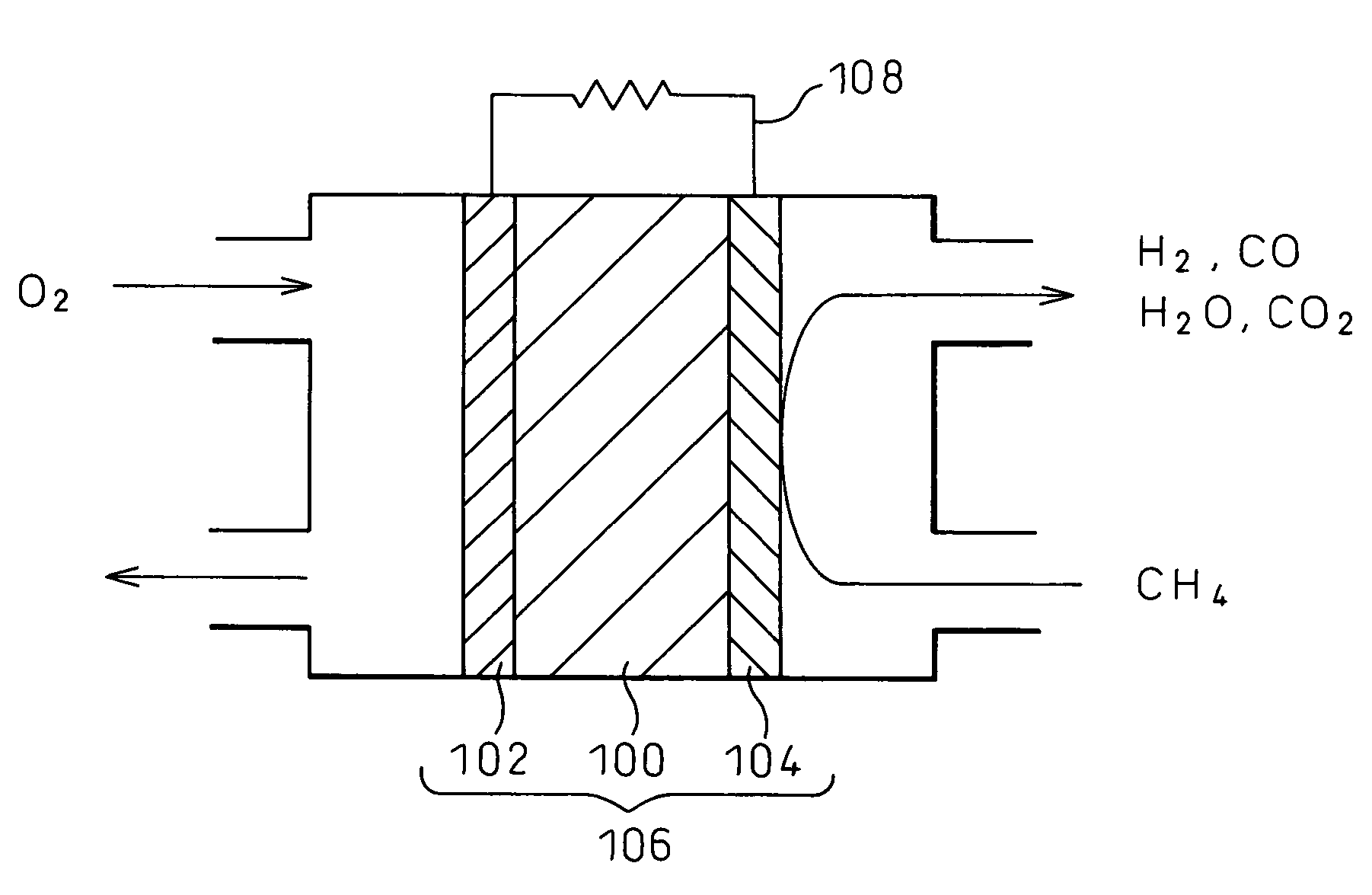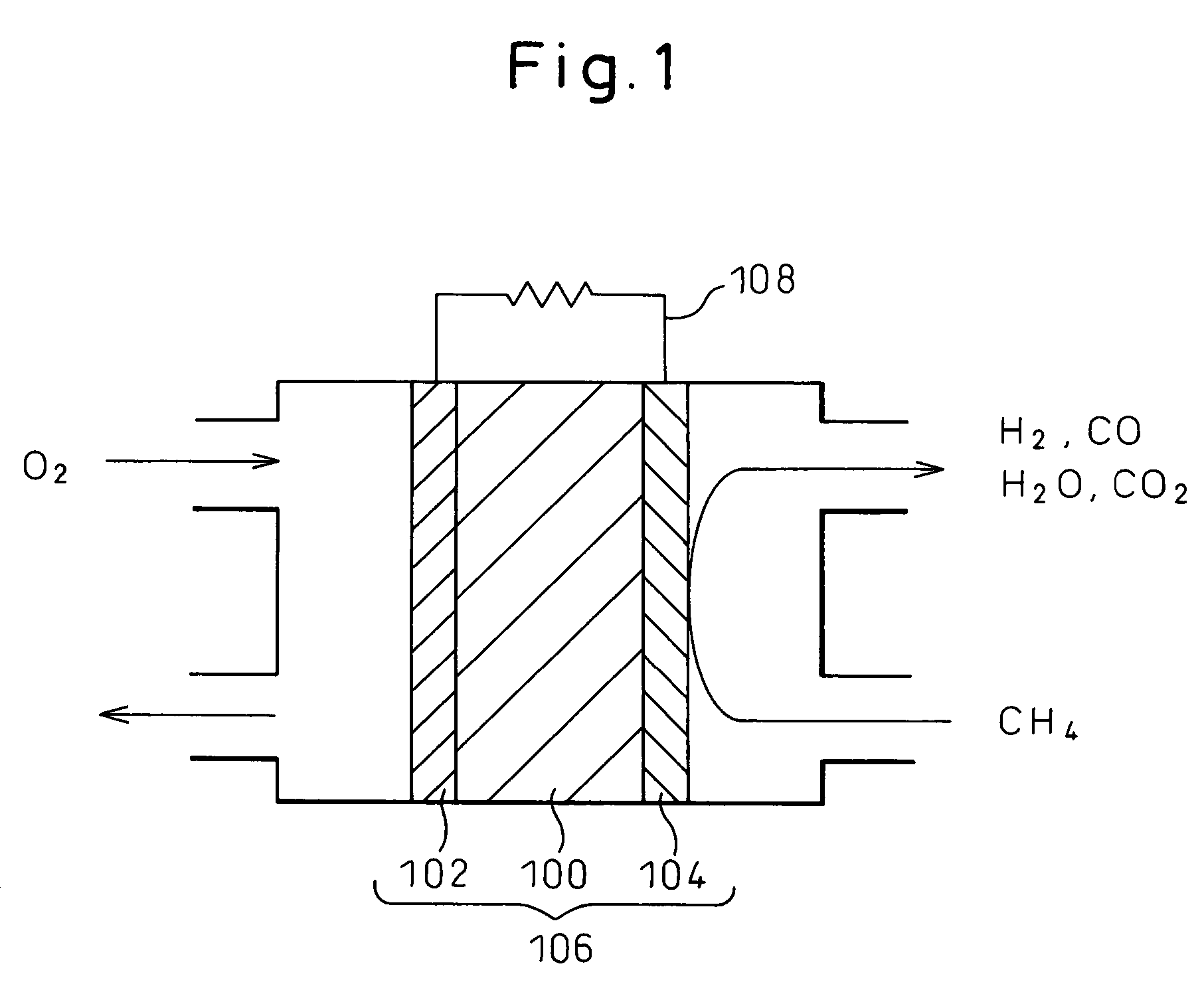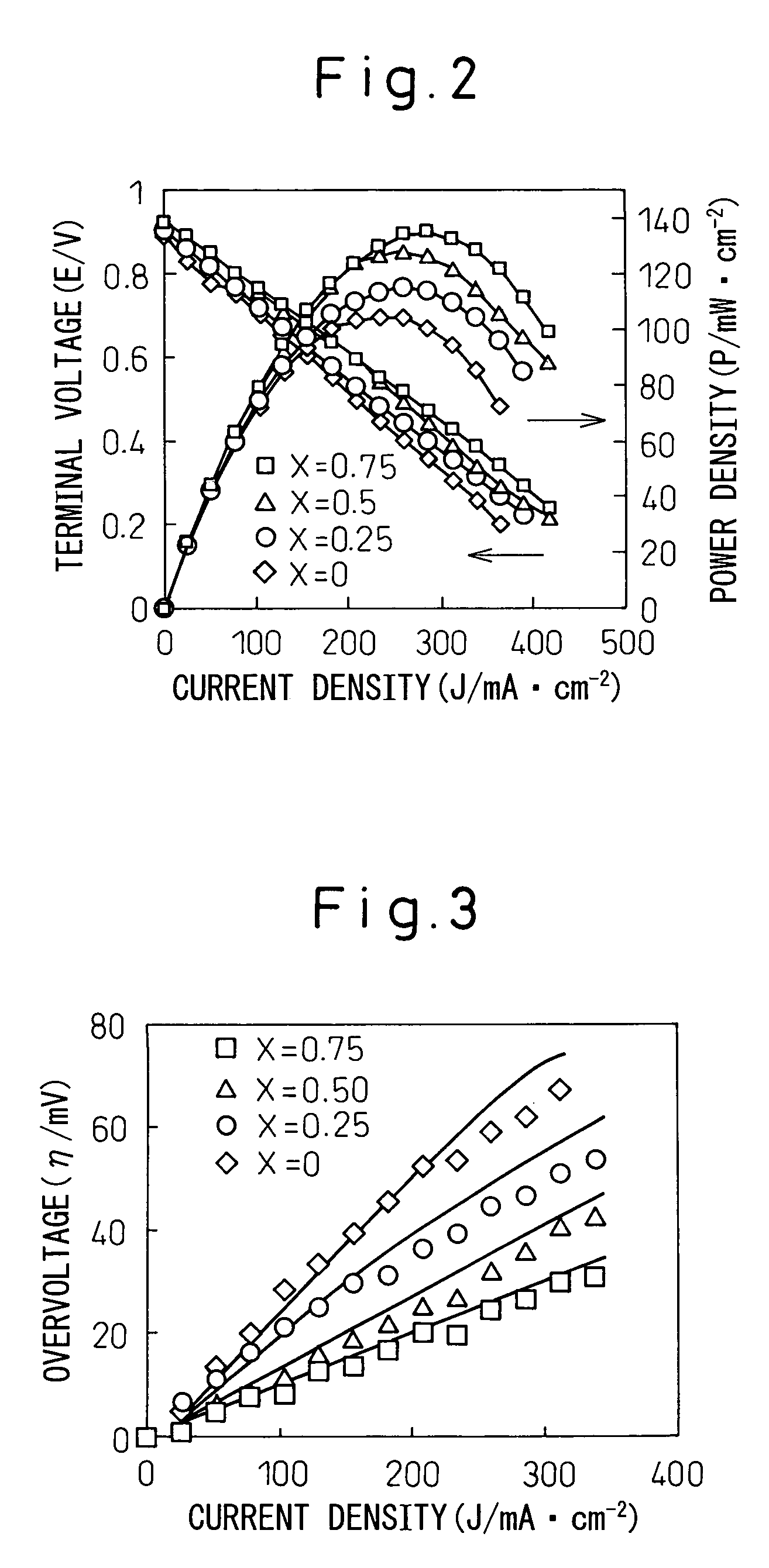Electrode material and fuel cell
a fuel cell and electrode technology, applied in the direction of cell components, basic electric elements, electrochemical generators, etc., can solve the problems of unsolved problems, carbon precipitation on the surface of the fuel electrode, and the fuel cell using a nickel cermet as a fuel electrode cannot etc., to achieve high fuel electrode performance and effectively generate electricity
- Summary
- Abstract
- Description
- Claims
- Application Information
AI Technical Summary
Benefits of technology
Problems solved by technology
Method used
Image
Examples
example 1
[0072]A solid oxide fuel cell battery having a fuel electrode formed from a cermet Ni1-xCox-SDC consisting of a nickel-cobalt alloy (No—Co) and SDC (samaria-doped ceria) was fabricated. For comparison purposes, a conventional solid electrolyte fuel cell having a fuel electrode formed from a nickel cermet Ni-SDC with no cobalt was also fabricated.
[0073]First, Ni1-xCoxO (in the formula, x is 0, 0.25, 0.5, or 0.75) was prepared in the form of a solid solution. Co3O4 powder and NiO powder in amounts necessary to obtain the respective compositions were mixed in an alumina crucible and were caused to react at 1000° C. for 10 hours in the atmosphere, and the resulting product was pulverized. The thus produced powders were again mixed in the crucible, and the resulting product was placed in a calcining furnace and was caused to react at 1000° C. for 10 hours in the atmosphere. When the thus prepared powders were subjected to X-ray diffraction analysis (XRD), it was confirmed that the Ni1-xC...
example 2
[0079]The fuel cell batteries fabricated in the foregoing example 1 were used as samples, and oxygen was supplied to the air electrode at a flow rate of 2×10−5 m3 / min, while dry methane (CH4) diluted with helium in a volume ratio of 1:9 was supplied as a fuel gas to the fuel electrode at a flow rate of 2×10−5 m3 / min. Power generation experiments were conducted at about 600 to 700° C. for the following items.
[0080][Comparison of Discharge Performance for Methane]
[0081]When open circuit voltage (terminal voltage) and output density (power density) were measured on each fuel cell sample while increasing the current density, measurement results plotted in FIG. 2 were obtained. As can be seen from the current density-voltage curves plotted in FIG. 2, when Ni1-xCox-SDC was used for the fuel electrode, the terminal voltage was 0.85 V or higher on any sample, and the power density increased with increasing amount of Co (x), the power density being the highest in the case of the fuel electro...
example 3
[0100]In this example, power generation experiments were conducted by repeating the method described in the foregoing example 2, with the difference that (1) hydrogen humidified by adding 3% by volume of vapor or (2) carbon monoxide (CO) was used as the fuel, instead of methane. The supply flow rate of hydrogen or carbon monoxide was set to 2×10−5 m3 / min., i.e., the same flow rate as that employed for methane. For all evaluation items, satisfactory evaluation results were obtained, as in the case of methane. Some of the experimental results are shown below.
[0101][Comparison of Discharge Performance for Hydrogen]
[0102]When the terminal voltage and the power density were measured on each fuel cell sample while increasing the current density, measurement results plotted in FIG. 9 were obtained. As can be seen from the current density-voltage curves plotted in FIG. 9, when Ni1-xCox-SDC was used for the fuel electrode, the terminal voltage was 0.85 V or higher on any sample, and the powe...
PUM
| Property | Measurement | Unit |
|---|---|---|
| specific surface area | aaaaa | aaaaa |
| specific surface area | aaaaa | aaaaa |
| particle size | aaaaa | aaaaa |
Abstract
Description
Claims
Application Information
 Login to View More
Login to View More - R&D
- Intellectual Property
- Life Sciences
- Materials
- Tech Scout
- Unparalleled Data Quality
- Higher Quality Content
- 60% Fewer Hallucinations
Browse by: Latest US Patents, China's latest patents, Technical Efficacy Thesaurus, Application Domain, Technology Topic, Popular Technical Reports.
© 2025 PatSnap. All rights reserved.Legal|Privacy policy|Modern Slavery Act Transparency Statement|Sitemap|About US| Contact US: help@patsnap.com



